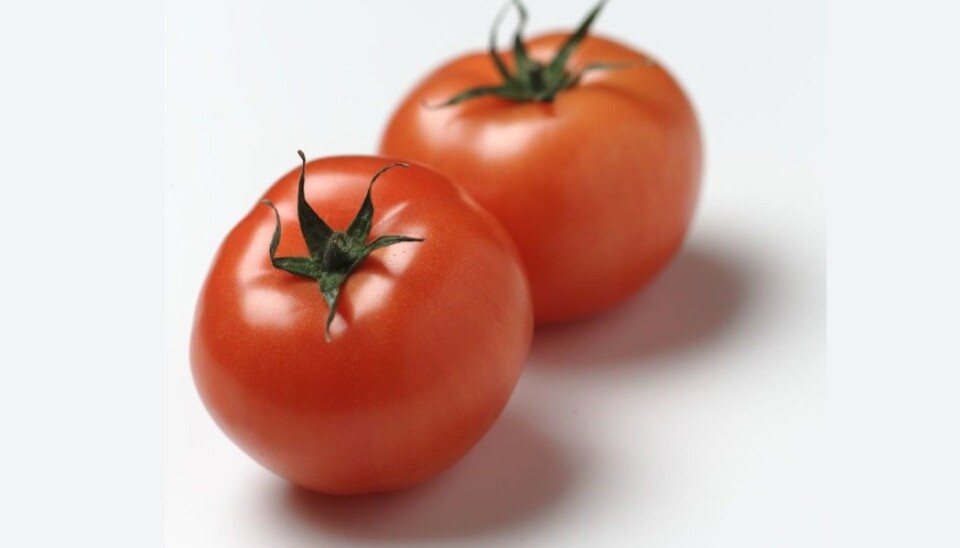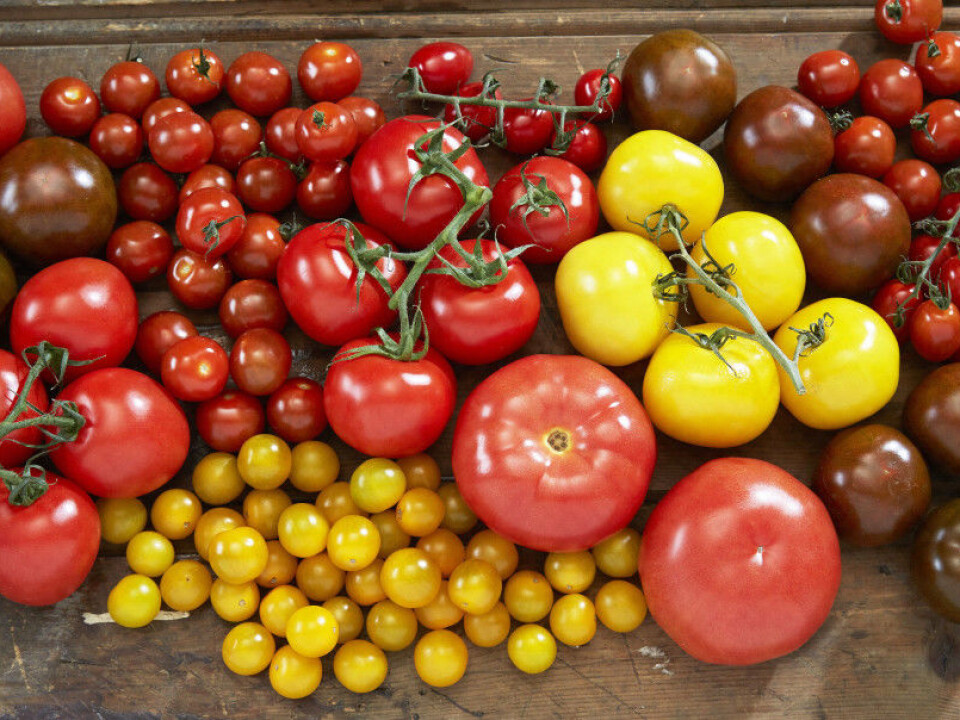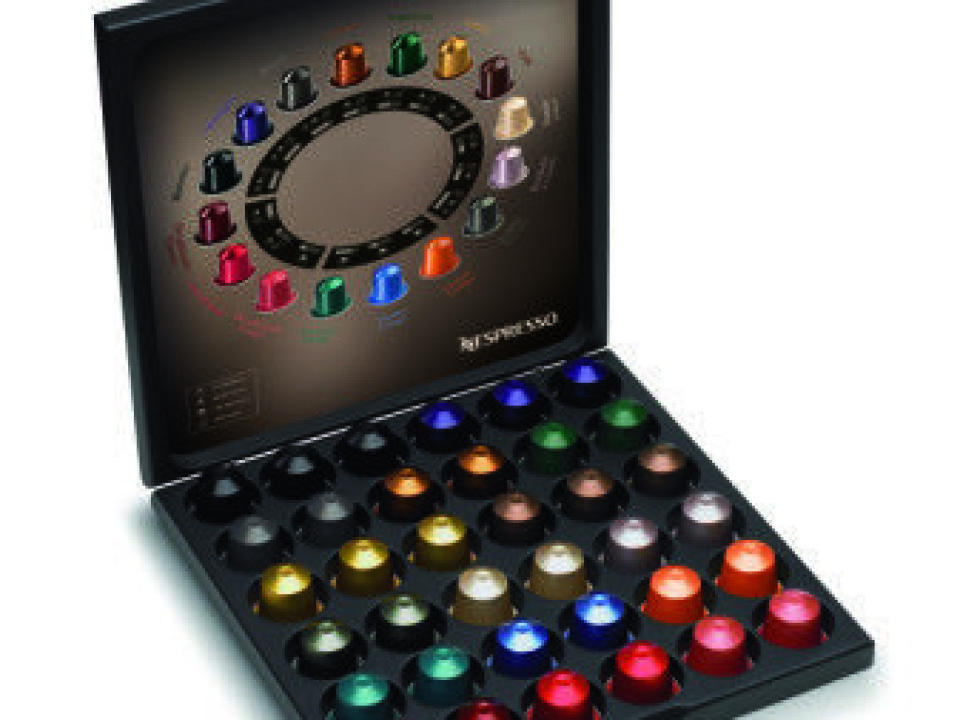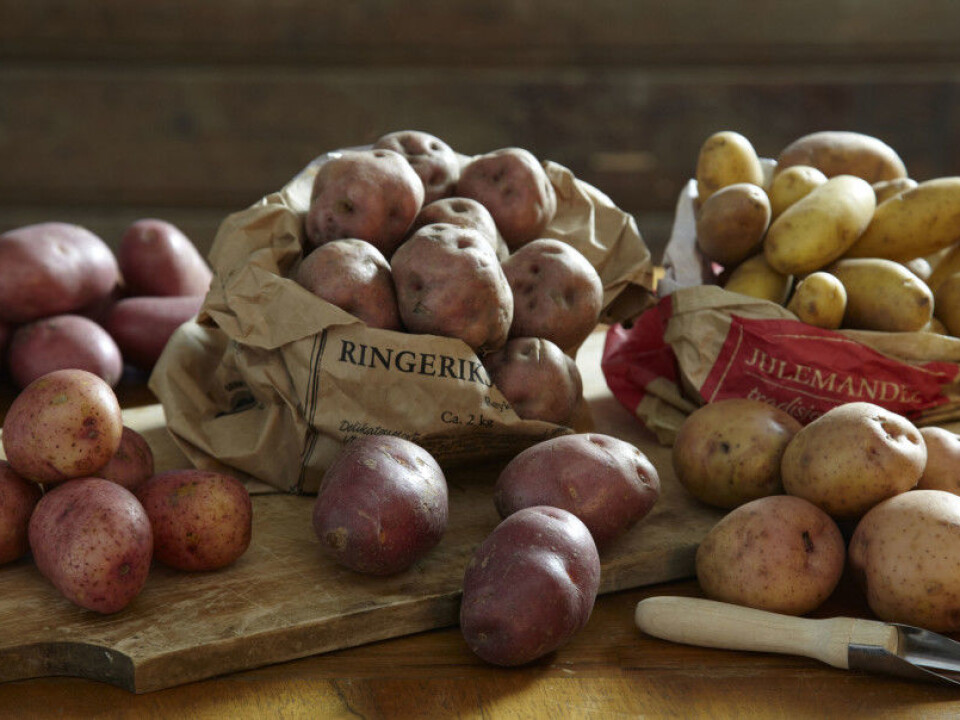
Tomatoes used to taste bad. Not anymore.
What do tomatoes, coffee, potatoes and beets have in common? An expanding number of varieties.
When taste researchers at the Nofima Institute in Ås started studying tomatoes 25 years ago, they found that virtually all Norwegian tomatoes in grocery stores were perceived as completely tasteless.
“Or they tasted bad. At least that’s what people answered when we asked them,” recalls Einar Risvik, a Nofima taste researcher.
Almost 50 different tomato samples were collected from the Norwegian marketplace, in a study commissioned by Norwegian food distributors BAMA and Gartnerhallen. Participants on a taste panel said that 70 per cent of these tomatoes tasted bad.
At the time, grocery stores were competing to sell tomatoes at the lowest possible price.
One billion kroner’s worth of tomatoes

This is no longer the case.
Researchers, in collaboration with producers and supermarkets, have managed to increase tomato consumption in Norway from less than 5 kg per person a year to somewhere between 15 and 20 kg per year.
That means Norwegians are forking out the equivalent of one billion kroner, or about 100 million Euro annually for tomatoes. That’s five times as much as when the researchers started studying the issue 25 years ago.
What follows is the story of what actually happened.

“We were really lucky that we started our research with tomatoes,” Nofima researcher Risvik said.
“The tomato is actually a very simple product,” he says. “If you want to make a good tomato, there are really only two things you need to worry about: firmness and sugar content.”
Lots of different tomatoes
These days, the typical supermarket contains many different types of tomatoes, from size to colour to shape.
Some stores have as many as 33 different types of tomatoes to choose from.

The differences in size and colour allow food scientists and stores to segment — or divvy up — the tomato market.
At the same time, we have been encouraged to like these different varieties, from plum tomatoes to cherry tomatoes to tomatoes on the vine. And we know which tomatoes to choose for a salad and which are best in a stew.
Risvik says there will be even more tomato varieties in the near future. There are more than 7500 different tomato varieties in the world from which researchers can extract genes.
Consider this: Next on your plate may be wrinkled or oblong tomatoes.
The secret to increased sales

Here it’s time to let you in on the most important secret to increased sales in stores, whether it’s sales of tomatoes or anything else.
The secret involves turning one product into two products.
“Classic marketing strategy says if you develop one product into two products, you’ll sell 30 per cent more. For each new product you create afterwards, you’ll sell another 10 per cent more,” Risvik said. “That’s what happened with tomatoes.”
Coffee sales and Nespresso
A good example of this is coffee.
In the 1960s, Norwegians drank only one type of coffee, the kind that was cooked in a pot.
“Then we got filter coffee and eventually Java coffee and a number of other types of coffee with tastes that were strong, round or bitter. As a result, the profit from selling coffee has increased dramatically,” Risvik said.
With more to choose from, he said, people's willingness to pay for coffee has increased dramatically.
The coffee company Nespresso is considered by experts as the ultimate example of how it is possible to get people to buy more of a product, if you turn one product into several different products.
The coffee capsule company basically sells eight different types of coffee, which have now been divided into even more combinations of flavours. They also made their own coffee machines and even their own shops where you can buy their coffee capsules. Rumour has it that more than 2,000 patents lie behind Nespresso's big coffee coup.
"Theirs has been a radical innovation in the market, marketing and technology," says Risvik.
What about the humble potato?
For 40 years in a row, potato sales in Norway had fallen. Something had to be done if Norwegians were going to eat potatoes as something other than French fries.
Now, the taste researchers have managed to do the same with the potato as they did with the tomato.
"A few years ago, Norwegian consumers had almost forgotten that potatoes could be more than just one thing," Risvik says.
But that is no longer the case.
Now many Norwegian consumers think just like potato producers and stores want them to think: That you should eat one variety with fish, another variety with lutefisk and a third kind with wild game.
So what’s next? Well, apples and cucumbers could definitely use some help, Risvik says. But the next new thing in Norwegian grocery stores is the beet — the yellow beet.
Beets have always been synonymous with red. But thanks to a farmer who took a different approach, you should soon be finding yellow beets in your local supermarket, if they’re not there already.
“This is a product that the restaurant market in particular has reacted very positively to. These new beets are cheap, healthy, taste good and they look great on a dinner plate,” Risvik said.
All this thanks to a farmer who thought a little differently.
----------































